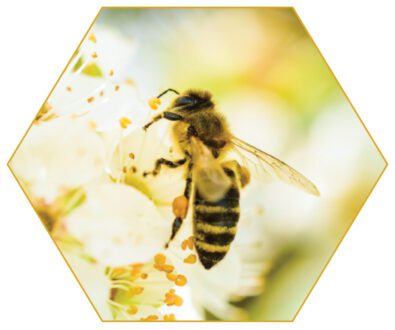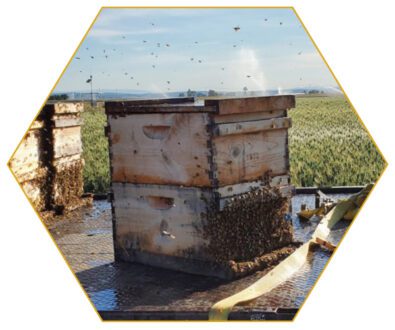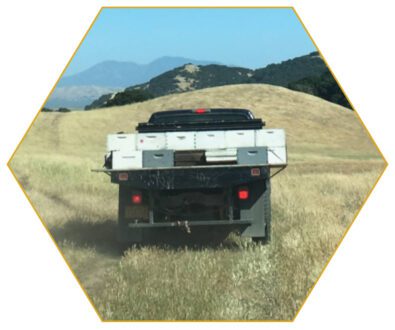Mar 10, 2024Q&A: Honeybee health in 2024
In the past 15 years, beekeepers have been losing up to 50% of colonies, and bee professionals have reported higher than expected colony losses during the fall and winter. Additionally, higher mite loads and slightly smaller colony sizes are being reported.
To learn what growers can do to ensure healthy bee populations, Fruit Growers News met with Elina Niño, University of California-Davis associate professor of Cooperative Extension — Apiculture and Department of Entomology and Nematology faculty director. Niño also heads the UC-Davis Bee Haven and California Master Beekeeper programs.
What’s the state of bee health in 2024?


There is also a constant threat of accidental introduction of novel pathogens and pests. Increased need for feeding and reduced access to forage are stifling the ability of bees to thrive. Climate fluctuations are causing problems with drought and lack of forage and even the increased cost of supplemental feed, sugar and other feed, keeps going up, making it economically challenging for the beekeepers to maintain colony numbers. There’s a reason why those prices are high.
What are some other challenges?
EN: Providing access to foraging sites, the need for providing continuous supplemental feeding, the shortage of skilled labor, drought, wildfires and bear damage.
How important are forage crops?
EN: Planting additional forage options for bees could be particularly useful for bees. Prior studies have found there is no competition between crops for bee activity.
What is your recommendation on forage plantings?
EN: Growers are encouraged to plant supplemental forage for bees. The Almond Board of California has a set of guidelines (available online) on how to protect bees in the environment as well as a supplemental forage guide and what to do to protect other bees. That’s a great reference for any grower, regardless of what they’re growing.
How important are native bees?
EN: We can support honeybees and native bees by providing supplemental forage for native bees. It’s always a good idea to provide some areas where they can nest in the ground. As many of the wild bees are ground nesting bees, having some loose soil where they can nest is really helpful.
What about spraying?


How can growers help beekeepers?
EN: Allow for access to check bees during pollination when appropriate. Work with beekeepers to provide clean water, provide supplemental forage plantings if possible. Provide nesting sites for other wild bees and native bees.
How important are contracts?
EN: Put contracts in place and have somebody legally look over the contracts. Within those contracts, you can often stipulate pretty much anything. There are contracts, for example, where a beekeeper will reduce the rental price if a grower has supplemental forage available for the bees or if a grower brings an especially strong colony.
Why should a grower use contracts?
EN: If you’re a new grower just starting out and you don’t know how to work with beekeepers, you want to protect yourself and put those contracts into place. It’s so important to understand what you’re agreeing upon and make the expectations clear, not just between a grower and the beekeeper, but also the pest control advisors and pesticide applicators. What I really like about the whole idea behind the guidelines from the almond board is that they put communication first. I can’t stress enough how important it is for everyone to clearly communicate expectations.
What’s your best advice for growers working with bees?
EN: Do not disturb colonies unnecessarily. It is advisable not to walk or stand directly in front of the colony entrance. If you need access to the colonies, please communicate with the beekeeper. It’s important to allow beekeepers access to make sure that they can manage colonies properly, allowing them to be able to easily check for and address any colony needs. Work with your pest control advisers and pest applicators to communicate safe pesticide application if necessary.
What is research showing about bee populations and their health?


What advances in beekeeping are you seeing?
EN: There is more interest in developing tools for precision beekeeping to reduce labor costs and be able to rely on automatic feedback for the beekeepers and growers about a state of the colony to allow for quick management decisions.
How different are grower relationships with beekeepers?
EN: I think that the challenges facing bees have actually brought different groups together to the same table in order to work together to address some of these challenges as a more unified group, which has really been a big step forward.
How will growers working with Extension agents and farm advisors help protect bees?
EN: Extension specialists and advisors are always available to provide input and latest management strategies for best practices to protect bees. They can advise on proper timing of bee delivery to the crop in order to “anchor” the bees in the crop (usually at about 10% bloom), stocking rates, hive placement, hive strength, etc., for optimizing pollination efficiency.
What role do Extension and farm advisors have in keeping bees healthy?
EN: Providing information on the latest research-based management strategies, any new developments in the field of apiculture research, providing field and lab services to the beekeepers in order to understand their colony health, providing education to increased skilled labor force, etc.














